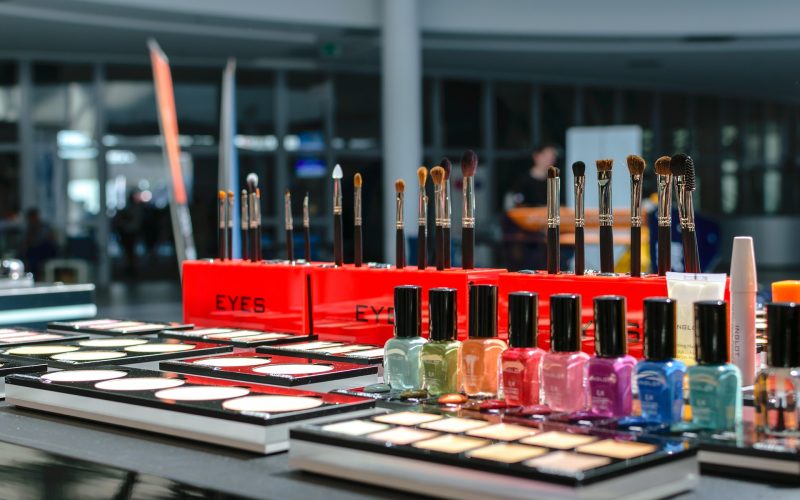
March 7, 2022
Taking care of your health with a healthy diet and regular exercise is a must. But are you certain that you will not develop terrible diseases such as cancer during your life? If you use a lot of skincare or chemical-based products, know that you are putting chemicals into your body through your skin.
Different substances do not enter our bodies just through eating. Many cosmetics include them, and our skin works as a transporter rather than a barrier, accumulating hazardous substances in our bodies over time; all in the name of beauty!
Since beauty supplies in Australia claim to be chemical-free, you may believe that the brand you use is devoid of hazardous ingredients. But have you ever checked out their ingredient list? There will be at least one or two such substances that may appear to make your skin glow or smooth but end up causing ailments.
Even though cosmetics or skincare items are approved by the Australian Competition and Consumer Commission (ACCC), there is a potential that a few goods that are approved contain toxic substances and long-term use can be lethal for you. We’ve put up a list below to assist you to understand which chemicals to avoid while shopping for beauty goods.
1. Sulphates
When sulfuric acid (H2SO4) combines with another chemical, sulphate are generated. They are also made from petroleum and plant materials such as coconut and palm oil. They function as surfactant and are used in lathering. Sulphates can cause irritation to your eyes and skin. They have the potential to prematurely remove the colour from your hair. There is also an ongoing dispute concerning their use owing to potential environmental risks. Deriving them from natural sources, such as palm oil, is destroying rain-forests. They can be poisonous to aquatic organisms if they are washed away.2. Parabens
Preservatives such as parabens are used to keep your skincare and cosmetics fresh and germ-free. They may be found in a wide range of items, including soaps, lotions, and cosmetics. According to research, they enhance the synthesis of the hormone oestrogen (female sex hormone) and interfere with reproductive and cognitive function. According to some research, parabens infiltrate your skin and mimic oestrogen, causing excessive cell proliferation in the breast leading to breast cancer.3. Fragrances
Fragrances may be found in a variety of skincare products, including fragrances, moisturizer, shampoos, cleansers, and conditioners. They are produced using chemicals that have been linked to respiratory problems, skin allergies, dermatitis, and reproductive system adverse effects. No organization prohibits the use of scents by manufacturers. They are not required to divulge what is included within their scents. Fragrances may be carcinogens (cancer-causing chemicals), irritants, or endocrine disruptors. So it’s time to ditch the fragrances!.4. Synthetic colours
Petroleum or coal tar are used to make synthetic colours. Hydrocarbons, carbon, and water combine to form coal tar. It is a thick, black, viscous liquid with a distinct odour. Have you been looking for lipsticks with a lot of pigment? It’s time to consider what goes into these colours. The greater the pigment weight, the greater the possibility of rising coal tar percentages. Many commercially available eyeshadows include coal tar as well. Skin irritation, cancer, acne outbreaks, and ADHD can all be caused by synthetic colours (attention deficit hyperactivity disorder).5. Toluene
Toluene is a petrochemical solvent that is commonly found in hair colours and nail polish. They can be harmful to your immune system and increase your risk of birth abnormalities and blood cancer. If you are pregnant, avoid using hair colours and nail paint since they can harm the growing foetus. Toluene can affect the human central nervous system, causing weariness, headache, nausea, and sleepiness.6. Talc
Do you remember how soft talcum powder is? This is because talc is the softest naturally occurring mineral. Talc is a moisture absorbent that is commonly found in baby powders, eye shadows, blush, deodorants, and some soaps. Talc, on the other hand, has been linked to ovarian cancer. It originally became a source of worry when a lady who had used Johnson & Johnson talc for 35 years died of ovarian cancer. Talc, when breathed, can induce lung tumours.7. Sunscreen Chemicals
Sunscreens contain chemicals such as PABA, benzophenone, oxybenzone, methoxycinnamate, and homosalate. They are thought to absorb light, but instead of protecting the body, they do greater harm. These compounds in sunscreen are endocrine disruptors.8. Non-toxic Ingredients
Everything that isn’t a red flag element is included in non-toxic skincare products. These compounds do not cause hormonal disruption, are not carcinogenic and are not allergies. They are non-toxic and have not been identified as harmful by environmental bodies. The majority of natural substances derived from plants fall into the category of non-toxic skincare and cosmetic ingredients. If you buy beauty online, make sure to read the ingredient list to ensure that none of the above-mentioned substances are present. It is time to prioritise your health, not only through a balanced diet and exercise but also by avoiding things that are incredibly harmful while masking under fantastic advantages. So, spare 2 minutes and consider exploring and checking the best skincare & beauty supplies in Australia online to live a healthier life.Related Items: beauty supplies in Australiaskincare





